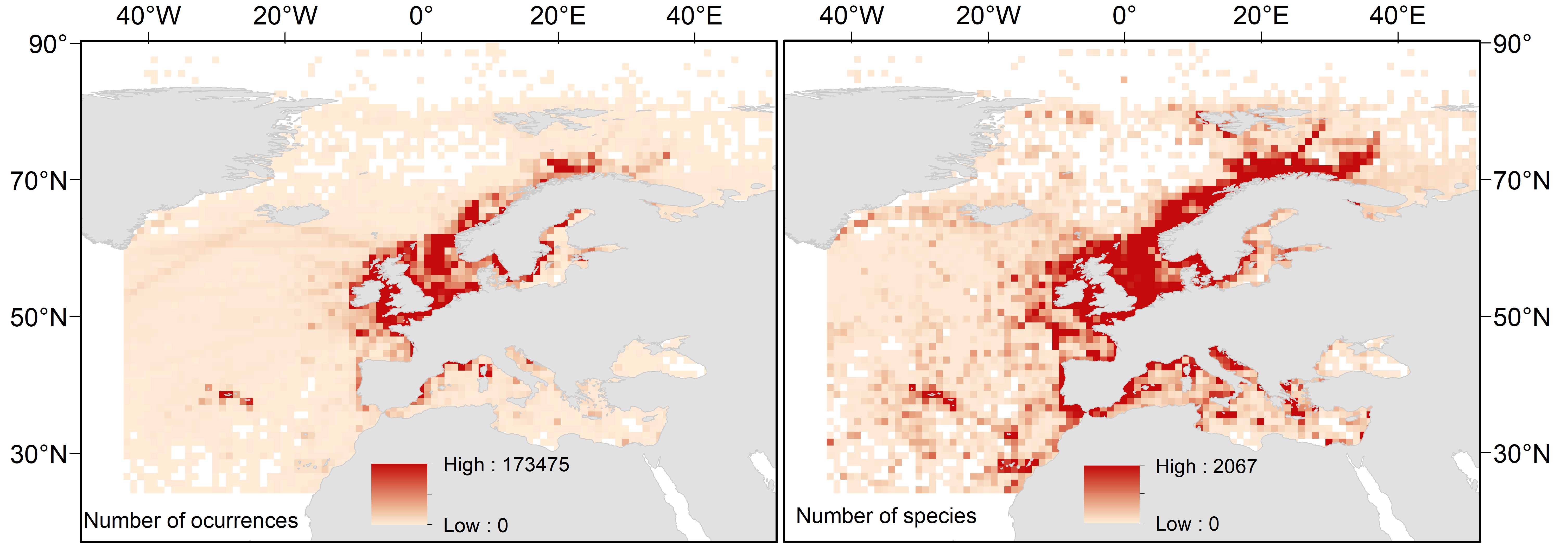Only 10% of the data collected to date in different campaigns is available on open access platforms, a scarcity of data that makes it difficult to correctly assess the conservation status of ecosystems and to implement protection measures.
A new study by the Institut de Ciències del Mar (ICM-CSIC) in Barcelona has revealed that, at present, the information available in open repositories on the species living in European seas is much less than expected, and is very fragmented in space and time, which makes it difficult to correctly assess the conservation status of ecosystems and, therefore, to apply protection measures.
According to the paper, recently published in the journal Frontiers in Marine Science, records are particularly scarce in southern Europe -especially in the southeastern Mediterranean and the Black Sea- making it difficult to make comparisons between regions. Furthermore, very little information is available on lesser-known and iconic species, such as some invertebrates. In contrast, large fish, birds and cetaceans are much better represented in databases.
The study analysed 20 million records available in museums and research centres, as well as information available on one of the largest open-access digital platforms, the Global Biodiversity Information Facility (GBIF), a repository that accumulates almost 2 billion species occurrence and abundance data from around the world.
“Knowing how species are distributed in space and time is a central aspect of biodiversity knowledge, and essential for the effective management of marine resources associated with biodiversity in a rapidly changing world," state the authors.
Fragmented and inaccessible information
One of the main conclusions of the work is that, in general, the information available is less than expected from the undertaken studies.
"In recent years an enormous effort has been made to digitise and make available to the scientific community a large amount of information, although there is still a lot of data that we cannot access", regrets Francisco Ramírez, the first author of the study, who adds that "this process of information democratisation is still in a very incipient state and it is estimated that it only represents 10% of the information available".
The rest is either not digitised and therefore practically inaccessible, as in the case of some museum collections, or it is not easily accessible, as it is contained in reports that are difficult to access or in languages other than those of the academic world.
Given this scenario, the scientific team calls for international cooperation programmes to increase this percentage, which, they claim, "is insufficient to assess the effects and extent of the current biodiversity crisis", whose rate of species extinction is historically unprecedented, and could even be exceeding that of the last mass extinction, the one that wiped out the dinosaurs.
In this sense, Jaume Piera, another of the study's authors, points out that "citizen science and platforms that allow data to be shared can complement some of the information deficits detected. Only by making all the information generated accessible will be possible to make use of it and promote actions to ensure a sustainable future for European seas".
Finally, the study reveals that nowadays the information available is not sufficiently well distributed over time, as there is a lack of records from the past to make comparisons over time:
"Much of the available information belongs to the last decade of the 20th century or the 21st century, and although this is good to determine the current state of biodiversity, it makes it impossible to make comparisons with previous reference periods that would allow us to evaluate trends; to know from where we come from and where we can go", concludes Marta Coll, another author of the study.
